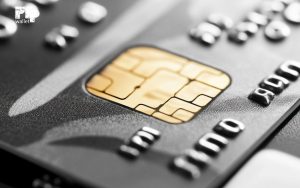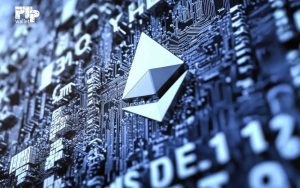IOTA is an open-source, scalable, and decentralized distributed ledger designed to handle transactions and exchange value on the Internet of Things (IoT). It is built on a distributed ledger technology that uses the structure of a Directed Acyclic Graph(DAG), a model which provides many of the advantages of blockchain while still providing a solution to the shortcomings and inefficiencies of blockchain technology. IOTA’s DAG is referred to as “Tangle.” Tangle is a system that allows transactions to be processed simultaneously instead of sequentially. In this system, individual nodes are connected to several other nodes in a tangle and the connection is in a specific direction. Transactions on this tangle are processed in parallel, thus allowing high scalability because as more systems are attached to it, it becomes more effective at processing transactions. In order for a few transactions to be processed, it has to process two previous transactions. This allows the network to grow infinitely and provides faster processing when more devices are connected to the Tangle. All nodes are subject to a propagation incentive whereby they are dropped by their neighbors if they do not process enough transactions.
IOTA’s design allows it to work without transaction fees, no blocks, no validators, and no miners are required. Unlike blockchain methods, this technology’s high scalability, energy efficiency, and ability to allow low-performance devices such as intelligent wristwatches or even toasters to participate directly on the network makes it appealing for use in the internet of things ecosystem.
The network also solves other problems which affect traditional blockchains, such as low network speeds and focusing on mining for a specific group. In the blockchain, users are willing to pay miners to have their transactions included in a block. This fee-dependent structure is a limitation in the Internet of Things economy where the value of microtransactions can be lower than the fees charged. Because in IOTA, all nodes can participate in the consensus. Because of this, users can set up nodes at a very low cost and actively take part in the consensus. Another thing that differentiates IOTA is the versatility of the technology, as it can be used to send data and information.
IOTA is the first open-source distributed ledger that has been developed to power the future of the Internet of Things with the objective of enabling interrelated computing devices to autonomously conduct transactions in a trustworthy and secure environment, free of fees and without the need for human-to-human interaction.
Who are the founders of IOTA?
It is Co-founded by David Sonstebo, Dominik Schiener, Dr. Serguei Popov, and Serge Ivancheglo. IOTA’s initial development was funded by an online public crowd sale, in which the participants bought IOTA tokens with other digital currencies.
What is IOTA used for?
IOTA is built primarily for the internet of things to ensure easy value and data transfer.
It is a platform created to serve as a bridge of communication between connected machines and between humans and machines.
It enables payments, microtransactions, and data storage between a network of physical devices that are connected to the internet.
The simplicity and effectiveness of this project make it a base for machine economy in the future. It is also potentially.
How is IOTA unique?
Unlike other cryptocurrencies, the network provides an avenue where transactions of any amount are carried out without any charge, deduction, or network fee. The distributed ledger system on which it is engineered makes it highly scalable, which means the more traffic on the network, the faster the transaction settlement.
IOTA uses a decentralized system, which means that no central coordinator has total control over the network or transactions.
Transactions on the network are fast and energy efficient because of the node-to-node verification system it uses, compared to Blockchain where miners invest energy to solve math problems before new blocks of transactions are added
How many IOTA are in circulation?
All of IOTA’s tokens were already pre-mined and created at its launch. The circulating supply and maximum supply of IOTA are fixed at 2,779,530,283,277,761 tokens. Digital currency exchanges trade IOTA in MIOTA units, where 1 MIOTA equals 1,000,000 IOTAs. All its tokens were created in the genesis block and sold out to investors in its ICO.
How is the IOTA network secured?
IOTA is resilient against attacks as it processes transactions simultaneously, and once a transaction has been verified, no external party or even the system itself can retract progress or make any change. The more traffic on the network, the more secure the network becomes. Also, the decentralization of IOTA means that no coordinator plays a special role. So, the network is globally distributed.
The tangled system has an extra layer of security with its proactive voting mechanism known as the Shimer. In the Shimer, nodes request the opinion of other nodes to decide which transaction to be included in the tangle or which should be discarded
How do I buy IOTA?
The IOTA token(MIOTA) can be used for a wide range of devices in the Internet of Things ecosystem, such as the exchange of data and making payments. It is available on a range of cryptocurrency exchanges, including Binance, Bitfinex, and Coinone, to name a few.
IOTA tokens can be easily purchased with the following steps.
* Open an account with the crypto exchange platform of your choice. Register, enter some basic information, and verify your identity. Most platforms would require you to upload a valid ID for verification, this sometimes takes up to a new days
* Once verification is complete, you can buy and trade cryptocurrencies. Proceed to set up a crypto wallet from the many available options.
* Deposit your cryptocurrency and wait for your deposit to be confirmed, then buy IOTA through your trading account by exchanging with BTC, ETH, or stablecoins such as USDT.
Which cryptocurrency wallet supports IOTA?
The PTPWallet platform supports many cryptocurrencies simultaneously, such as Hoge Finance (HOGE). Because of its vast use case, it has grown to become one of the most used platforms, as it serves as an exchange and an engine to discover other cryptocurrencies. Users can easily use PTPWallet as their IOTA wallet because it offers a simple interactive interface, making it easy for people to navigate.



